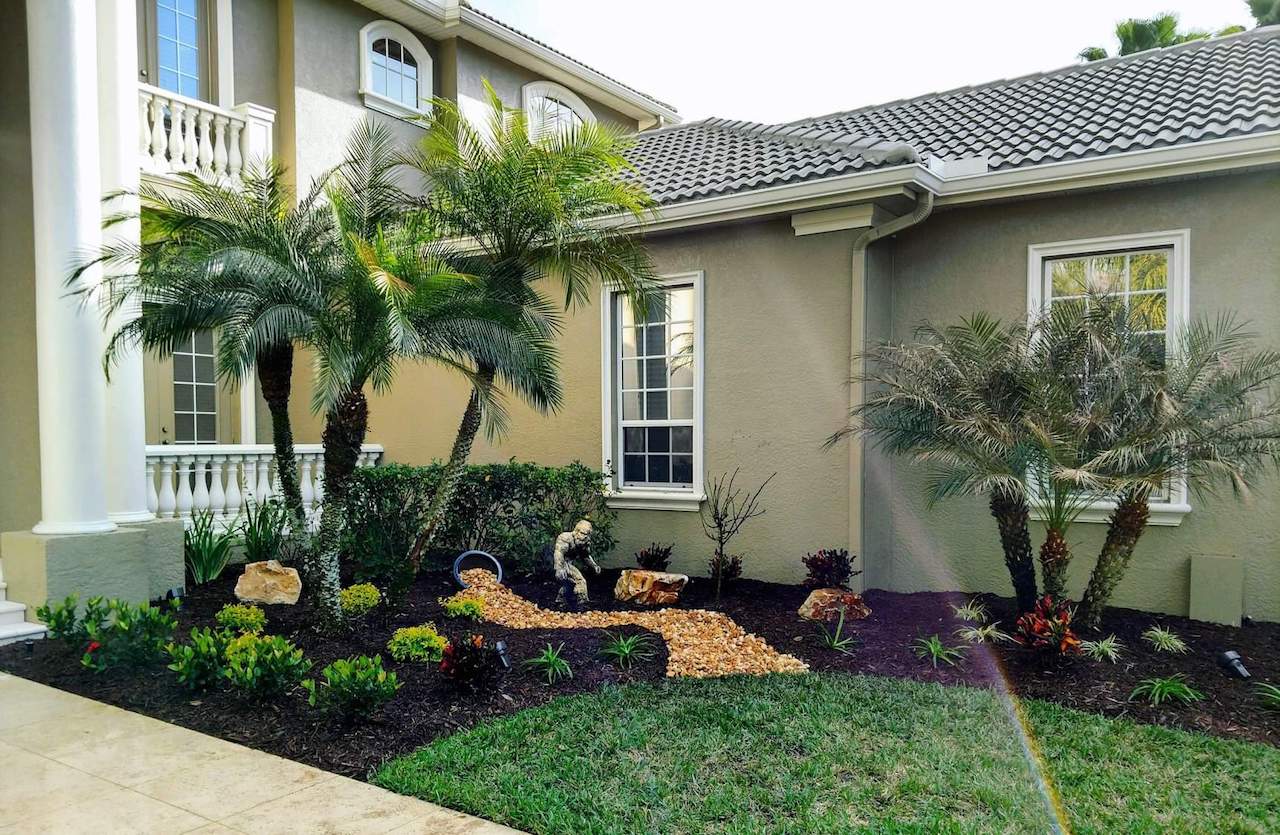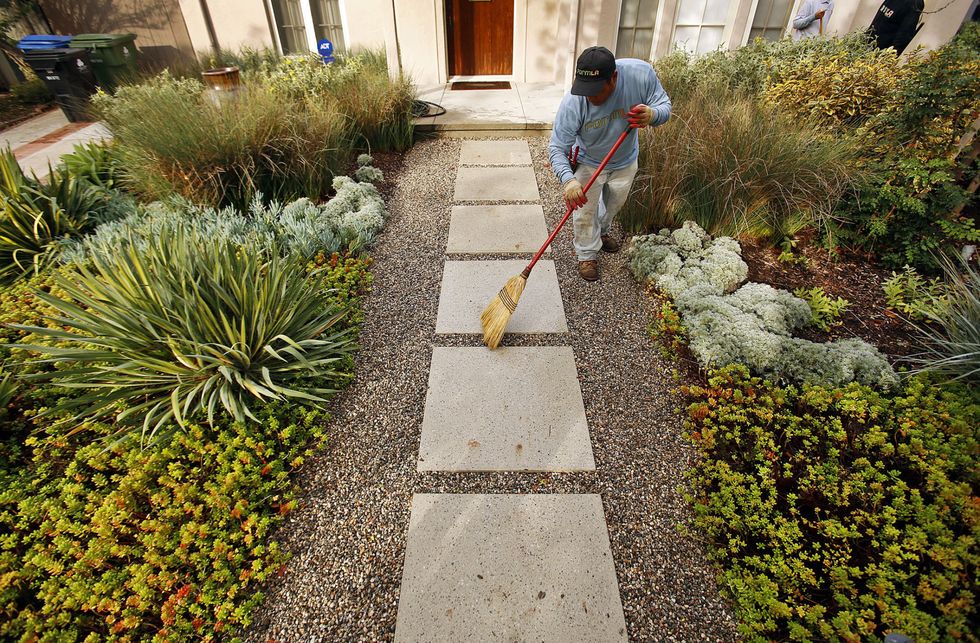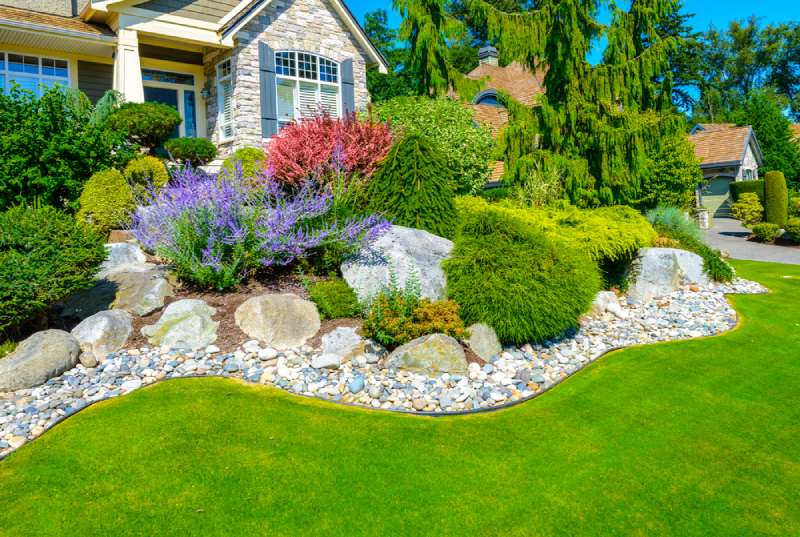Top Tips for Enhancing Your Yard with Palm Desert Landscaping Ideas
Top Tips for Enhancing Your Yard with Palm Desert Landscaping Ideas
Blog Article
A Comprehensive Guide to Designing and Implementing Effective Landscape Design Solutions
The art and science of landscaping expand beyond plain visual appeals; they entail a thoughtful integration of style principles, ecological stewardship, and sensible application. A thorough guide to reliable landscaping services starts with a comprehensive understanding of your exterior area, highlighting the significance of unity, proportion, and balance. As we check out lasting strategies and the selection of appropriate flora, the effects for biodiversity and area health end up being significantly noticeable. What techniques can one employ to make certain these landscapes not just flourish yet also grow in consistency with their environments?

Understanding Landscape Style Concepts
One might wonder what fundamental components contribute to efficient landscape layout. At its core, effective landscape layout rests on a number of vital principles that guide the plan and choice of elements within a space. These principles include unity, equilibrium, proportion, and rhythm, each serving to create a harmonious outdoor environment.
Unity describes the natural relationship among numerous parts, making certain that they interact visually and functionally. Balance can be achieved with in proportion or asymmetrical setups, permitting the landscape to really feel secure and inviting. Proportion involves understanding the scale of aspects in relationship to each other and the surrounding atmosphere, promoting visual consistency and convenience.

Assessing Your Outdoor Space
Before applying the principles of landscape design, a comprehensive assessment of your outside area is essential. This initial examination assists define the extent of your landscaping task and makes certain that your layout lines up with the one-of-a-kind qualities of your home. Begin by examining the dimensions of your room, taking precise dimensions to understand the available area for numerous elements such as yards, pathways, and patios.
Following, observe the existing attributes of your landscape, including topography, soil quality, and water drainage patterns. These aspects substantially influence plant option and placement. Furthermore, assess the sunlight exposure across different areas throughout the day, as this will certainly influence the sorts of plants that grow in your yard.
Consider the microclimates developed by structures, trees, and other challenges, as they can influence temperature and dampness degrees. Finally, bear in mind of any existing plants or hardscape elements that you desire to maintain or get rid of. This extensive evaluation lays the groundwork for a efficient and well-informed landscaping solution, ensuring that your layout is not only visually pleasing however sustainable and likewise functional for many years to find.
Lasting Landscaping Methods
These techniques not only promote ecological equilibrium but additionally enhance the aesthetic and practical value of a landscape. Carrying out reliable watering systems, such as drip irrigation, reduces water waste and makes certain that plants get sufficient moisture (Palm Desert Landscaping).

One more efficient method is the calculated placement of trees and hedges to supply natural advice windbreaks and color, thus lowering power costs (Palm Desert Landscaping). Rainfall gardens can be integrated into the landscape style to manage stormwater drainage properly, filtering pollutants prior to they enter rivers
Selecting the Right Plant Kingdoms
Choosing the right plants for your landscape is essential to achieving both aesthetic charm and ecological consistency. The procedure starts with an understanding of your neighborhood climate, soil problems, and the particular microenvironments within your landscape. Examining aspects such as sunlight direct exposure, dampness levels, and existing flora will assist you choose plants that prosper in your distinct setting.
Think about including native plants, as they are well-adapted to regional problems, need less upkeep, and support regional wild animals. Furthermore, picking a varied range of varieties can enhance biodiversity while minimizing the risk of condition and pest episodes. It is important to assess the development habits, blooming periods, and seasonal shades of possible plants to produce a vibrant and natural landscape.
Furthermore, think of the planned use the room; for example, if the area will certainly experience high foot traffic, select resilient ground covers. By attentively picking plants that top article straighten with both your visual objectives and ecological demands, you can develop a sustainable landscape that not just boosts your building yet also adds favorably to the bordering environment.

Implementation and Upkeep Techniques
When the best plants have actually been selected for your landscape, the emphasis moves to effective application and continuous upkeep techniques. Successful installment starts with correct site preparation, that includes dirt screening to figure out nutrient levels and pH, adhered to by modifying the soil as required. Thoroughly prepare plants according to their growth practices and light needs, ensuring sufficient spacing to advertise healthy development.
Irrigation is a crucial aspect of implementation. Establish a watering routine that thinks about the certain demands of each plant species, adjusting for seasonal adjustments. Utilizing drip watering systems can boost water performance and lower overflow.
Upkeep techniques must be applied to make certain the long life and vigor of your landscape. Normal tasks consist of weeding, mulching, and pruning to manage growth and stop illness. Fertilizing should be conducted based on soil examinations, offering the essential nutrients without over-fertilizing.
Checking for illness and parasites is vital; early detection can stop significant damage. Finally, seasonal adjustments to maintenance regimens, such as preparing and winterizing perennials for spring growth, will make sure that your landscape continues to be visually appealing and healthy year-round.
Conclusion
Effective implementation and recurring upkeep even more guarantee the longevity and vitality of landscapes. By integrating these elements, landscapes can be changed right into lovely, functional atmospheres that advertise biodiversity and add positively to neighborhood health.
One might question what fundamental components add to effective landscape layout. At its core, successful landscape design pivots on numerous key concepts that direct the plan why not try these out and selection of components within a room.Picking the right plants for your landscape is critical to accomplishing both aesthetic charm and ecological harmony. It is vital to assess the development routines, growing durations, and seasonal colors of possible plants to produce a dynamic and cohesive landscape.
When the right plants have been chosen for your landscape, the focus moves to efficient implementation and continuous maintenance approaches.
Report this page